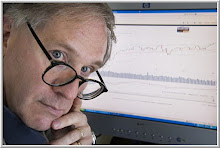I'm hearing from more traders than usual about their struggles with performance anxiety. As one successful developing trader put it, the problem tends to happen "on high profile trades that you could say most traders have an eye on". This is a very good observation. The higher profile the trade--i.e., the greater the perceived opportunity--the more room there is for performance pressure. As Epictetus observes, the issue is not the "real problems" about the trades, but rather the "anxieties" about those trades.Let's look at this from a psychological angle. The more we perceive--and emphasize--opportunity in a situation, the more room we create for anxiety should we miss out on this opportunity.
Imagine shooting a free throw during a basketball practice. It's routine, you've done it hundreds and hundreds of times, and you feel no pressure. Now imagine the situation from my old college team. You've had a long practice after classes and you're dead tired and want to get home. The coach announces that players can go take a shower, change, and go home after they have made 10 consecutive free throws. Now, all of a sudden, there is pressure. You *really* want to go home, so once you've made six foul shots in a row, you worry that you might miss one and have to return to square one. Coach, of course, knew that. This was not simply a practice of free throw shooting, but a practice of performing under pressure.
Now imagine that it's an actual game and the second-half clock is winding down with your team down a point. You have just been fouled, and you get to shoot a one-and-one. If you miss the first shot, the odds are good that the opposing team will grab the rebound and run out the clock for the win. If you make the first shot, you get a second shot that could win the game for your team. Everything is on the line. Suddenly, what had been routine in practice feels anything but routine.
This is what is happening for the trader who experiences performance pressure. It occurs in a "high profile" situation in a volatile market, where the trade could either do very well or very poorly. Moreover, it's a situation that other traders on the floor are focused on. Everyone will see if you nail it or mess it up. If this were an ordinary trade in simulation mode, there would be no pressure and it would be relatively easy to execute. With more on the line--financially and psychologically--we start to overthink the trade. That gets us away from what we know how to do naturally.
Very often, performance pressure manifests itself as perfectionism. We feel that everything is on the line, so we try to do everything perfectly. The perfect becomes the enemy of the good, as it gets us away from doing what we know how to do naturally. Like most players, I had a routine for shooting a free throw. Hold the ball in both hands, look at the rim, bounce the ball three times, look at the rim again, bounce twice, look at the rim, exhale, focus, and shoot. Same way, every time. But if I am in a pressured situation, I alter the routine. I don't exhale. I aim the ball. I become self-conscious of my release. Clang. The shot bounces off the front rim.
So it is with trading. We over-focus on the entry, wanting the perfect risk-reward. Suddenly the market moves in the anticipated way before we get in. We don't want to chase it, so we hope for a pullback, but it keeps going. We missed the trade. Clang.
What my coach realized is that you can't learn to perform under pressure unless you practice under pressure. That is why military and SWAT teams practice maneuvers under realistic conditions with live fire. That is why EMT personnel practice rescue methods under observation while being timed. Practice under pressure turns pressure into routine. That is how actresses and actors overcome stage fright. Going on stage again and again in dress rehearsals prepares them for the live performance.
As traders, we can create dress rehearsals in imagery--vividly imagining pressured situations and visualizing in detail how we want to respond. Again and again, we walk ourselves through pressured situations and the repetition makes the pressure familiar. We can't be stressed out by something we're very familiar with. We can also create our own dress rehearsals by trading challenging situations in simulation mode and making ourselves accountable for the outcomes. Imagine, for example, working in simulation mode and not being allowed to trade live for the next session unless the simulated trades were executed well.
We learn to perform under pressure by building pressure into our practice. No psychological self-help methods will work if we're not making use of them in the actual heat of battle. If our practice is comfortable, we set ourselves up for performance anxiety when the game becomes uncomfortable.
Further Reading:
Performance Anxiety: The Most Common Problem Traders Face
.






